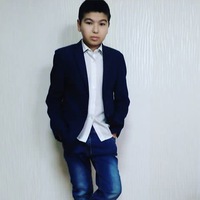
Ситуация 5. Трёхлетняя Алла, держа в руках ветку тополя с зелёными листочками, бьёт ею по скамейке.
Листочки отрываются и падают на землю. Довольная, девочка хохочет: – Ха-ха, полетели, ещё полетели… – Перестань стучать! – приказывает мать, стоящая рядом и увлечённо разговаривающая с соседкой. Алла на время останавливается. Потом отходит от матери и начинает бить веткой о второй край скамейки до тех пор, пока на ветке не остаётся ни одного листочка. Затем девочка отрывает новую ветку и начинает опять истребление листков. Мать подходит к дочери и говорит: – Алла, дай веточку, я тебе расскажу что-то интересное… Девочка отдаёт ветку и просит: – Рассказывай, рассказывай… – Видишь, у листочков, как у тебя и у меня на руках, видны жилочки. По ним течёт «листочкина кровь». А вот этой ножкой листок прикрепляется к ветке. Ты бьёшь его по ножке, она ломается, и листку больно. Девочка берёт из рук матери ветку, гладит на ней листочки, затем осторожно кладёт ветку на скамейку и говорит: – Не плачьте, я больше не буду вас бить! 1. Почему рассказ матери оказался более действенным, чем приказание? 2. Какие чувства у девочки вызвал этот рассказ? 0
0
 0
0
Ответы на вопрос
 Внимание! Ответы на вопросы дают живые люди. Они могут содержать ошибочную информацию, заблуждения, а также ответы могут быть сгенерированы нейросетями. Будьте внимательны. Если вы уверены, что ответ неверный, нажмите кнопку "Пожаловаться" под ответом.
Внимание! Ответы на вопросы дают живые люди. Они могут содержать ошибочную информацию, заблуждения, а также ответы могут быть сгенерированы нейросетями. Будьте внимательны. Если вы уверены, что ответ неверный, нажмите кнопку "Пожаловаться" под ответом.

Этот рассказ вызвал жалость и понимание.
 0
0
 0
0

Situation 5: The Story of Alla and the Leaves
In this situation, three-year-old Alla is happily playing with a branch of poplar leaves, hitting them against a bench. Her mother, who is engaged in a conversation with a neighbor, tells Alla to stop. Alla momentarily pauses but then starts hitting the branch against the other end of the bench until all the leaves fall off. Her mother approaches her and asks for the branch, saying she has something interesting to tell her. Alla hands over the branch and eagerly listens to her mother's story. Afterward, Alla gently strokes the leaves on the branch, carefully places it on the bench, and promises not to hit anyone with it again.
1. Why was the mother's story more effective than her command? The mother's story was more effective than her command because it provided Alla with an explanation and understanding of the consequences of her actions. By explaining how the leaves are connected to the branch and how hitting them can cause them pain, the mother appealed to Alla's empathy and helped her develop a sense of responsibility. This approach engaged Alla's curiosity and allowed her to make a personal connection with the leaves, leading to a change in her behavior. 2. What emotions did the story evoke in Alla? The story evoked a sense of empathy and understanding in Alla. When her mother explained how the veins in the leaves are similar to the veins on their hands, Alla could see the connection between herself and the leaves. She realized that hitting the leaves caused them pain, which made her feel sorry for her actions. This understanding led to a change in her behavior, as she gently stroked the leaves and promised not to harm them anymore. The story helped Alla develop a sense of compassion and respect for nature.
 0
0
 0
0
Последние заданные вопросы в категории Психология
-
Математика
-
Литература
-
Алгебра
-
Русский язык
-
Геометрия
-
Английский язык
-
Химия
-
Физика
-
Биология
-
Другие предметы
-
История
-
Обществознание
-
Окружающий мир
-
География
-
Українська мова
-
Информатика
-
Українська література
-
Қазақ тiлi
-
Экономика
-
Музыка
-
Право
-
Беларуская мова
-
Французский язык
-
Немецкий язык
-
МХК
-
ОБЖ
-
Психология
-
Физкультура и спорт
-
Астрономия
-
Кыргыз тили
-
Оʻzbek tili











